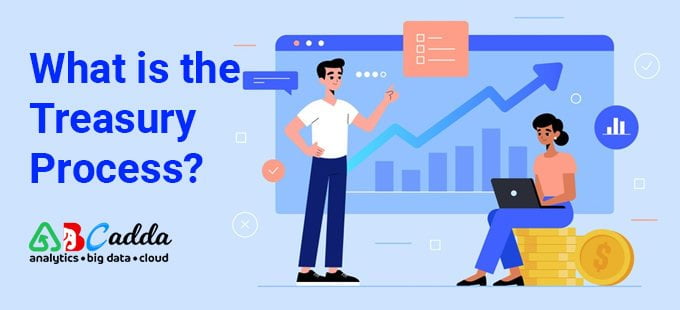Entrepreneurs are always looking for banking resources to use to manage their assets and financial interests. Cash management services can help optimize business finances by managing money, investments and other financial assets. What exactly is treasury management? It is a management system that aims to optimize a company’s liquidity while reducing financial, operational and reputational risks. Learn more about treasure management, and what the treasury process is.
Table of Contents
Treasury Management Process:
Treasury is the management of cash flow in the organization. To understand what this means, let’s first look at cash flow in an everyday context. When you move money from your savings account to your checking account, you are managing your cash flow. You may be prepared to pay an invoice.
- To pay the bill, you give money by transferring it to your checking account. This way, you are protected when payment is received.
- You may be traveling to a new country. Therefore, expect more volatile or unpredictable costs. To avoid running out of cash, withdraw more money into your checking account. This way you can cover unexpected costs.
Like humans, organizations need to manage their cash flow. Businesses, governments, nonprofits, and small businesses need to do this. Several large organizations manage thousands of transactions every day. Managing cash flow is becoming a full-time job and in many organizations this requires a whole team of cashiers, each with their own area of responsibility and experience.
What Is The Treasury process?
End-to-end process: integration and implementation:
As the function of financing decreases in all business sectors, financing and cash processing must also be carried out. For example, a business unit should be empowered to manage payments using a standardized process, a process that uses a common digital core to which all cash-related processes can be linked. Ultimately, all business-related activities should be an integrated view of cash flow provided by the cashier and the CFO office. Ideally, you should be able to:
- Centrally manage bank accounts for the entire company and enforce stable checks when opening, closing and managing signers
- Set up a cash collection structure, operate the company’s internal network, and initiate payment on behalf of processes.
- Start the movement of funds quickly in the money management process to avoid overdrafts, minimize bank fees, and reduce borrowing costs.
- Get detailed liquidity forecasts to plan future cash flows and get long-term guidance for your cash transactions
Understand your position and your risk management:
When financing and treasury processes are consistently integrated into the company with consolidated data views on the same platform, the result is better visibility. This gives you a strategic advantage. You can now see your cash position in real time. Now you can make decisions quickly and agile in a fast-growing business environment.
This visibility also helps minimize risks and administrative costs. Take, for example, the increase in financial risk that results from fluctuations in exchange rates, interest rates, and raw material prices. Real-time visibility of transactions, market trends and current positions gives you a snapshot of your financial risk. And with end-to-end support, you can quickly execute trades that you protect against that exposure.
See what’s happening now and next:
With regard to real-time financing, the maximum possible analysis is in the real-time dashboard. When your CEO calls you on your cash position, you can view the right answers instantly via the dashboard.
However, sometimes you need to delve deeper. Sometimes it is necessary to process numbers and transactions on the back-end system that manages on the dashboard. You may also want to run reports based on what you find. In this case, the limited range of standard report formats will not suit your needs. Instead, you want strong ad hoc reporting that you can use to communicate whatever is needed to deliver.
Important simulation functions are also important. For example, as a cashier, you want to understand the implications of holding a certain position in the market. The ability to create scenarios and assess where certain decisions can be made can be critical to financial performance.
Add predictive analytics using machine learning to this list. By studying machine learning algorithms on large amounts of financial data, you can identify models that can be used to predict what will happen next, for example, to identify increased liquidity risk due to recent market changes. By taking action based on the developments that develop along the way, you can better manage your financial portfolio and keep your business on the right financial footing.
Conclusion:
Smart treasury management is not science fiction. Today, many financial organizations develop end-to-end financial processes with the transparency and analysis needed to improve financial performance.
